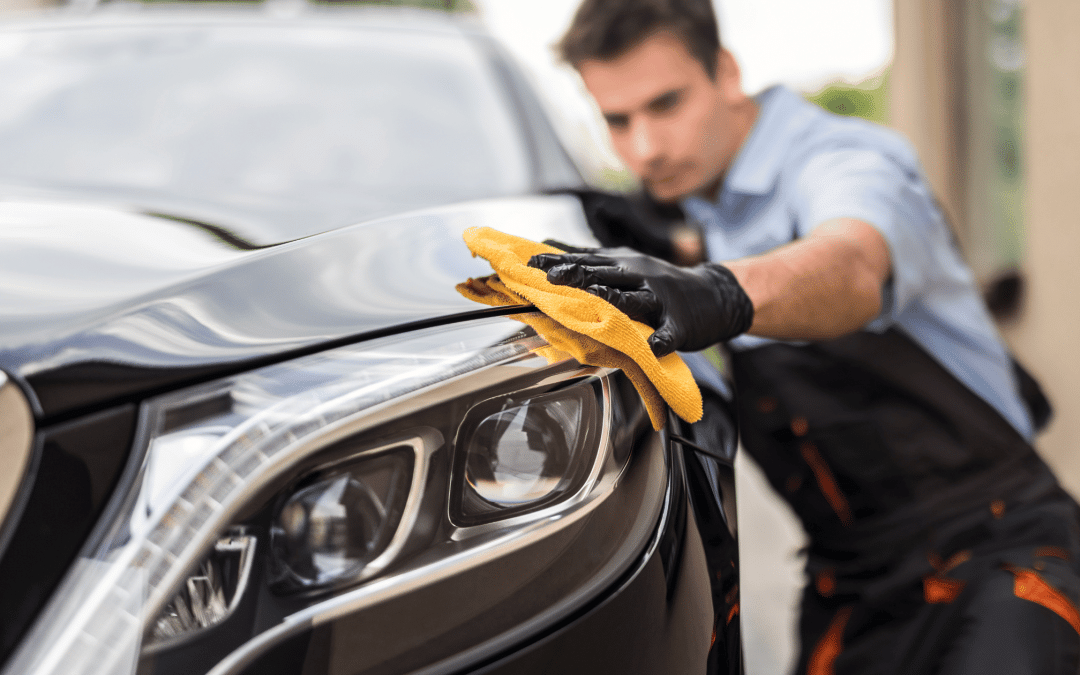Your car’s paint is one of the first things people notice—and one of the most vulnerable to seasonal wear and tear. Sun, salt, pollen, grime, and even falling leaves can slowly strip away shine and value. Without a plan, your vehicle’s finish will fade faster, costing you more in repairs, repainting, or early resale losses.
That’s why building a Yearly Detail Schedule is essential. A consistent seasonal plan not only preserves your paint but also protects your investment year after year. At Finishing Touch Car Care, we believe every driver deserves a vehicle that looks sharp, withstands the elements, and retains long-term value.
In this guide, we’ll walk you through a simple but powerful detailing schedule tailored to each season—plus how professional help can keep you ahead of the curve.
Why a Yearly Car Detailing Schedule Matters
Every season exposes your car to unique threats:
- Spring: leftover road salt, pollen, tree sap.
- Summer: intense UV rays, bug splatter, bird droppings.
- Fall: moisture, fallen leaves, and acidic debris.
- Winter: road salt, slush, and corrosion risks.
Skipping or delaying care allows these elements to bond with your paint, creating scratches, dullness, or even permanent damage.
A yearly detail schedule ensures:
- Consistent Protection: Wax, sealants, or ceramic coatings provide a shield against the elements.
- Resale Value: A well-maintained finish commands higher trade-in or sale prices.
- Less Stress: Preventive care means fewer costly paint corrections later.
In short—detail by the calendar, not just when the car looks dirty.
Spring Detailing: Renewal & Protection
After a harsh winter, spring is the season of resetting your paint’s health.
- Deep Wash & Decontamination: Remove salt, sand, and winter grime from both paint and undercarriage. A clay bar treatment is recommended to lift embedded contaminants.
- Polish & Protect: A light polish refreshes the surface, removing fine scratches caused by snow brushes or debris. Follow with wax or a synthetic sealant to defend against pollen and tree sap.
- Interior Refresh: Vacuum and shampoo carpets to remove salt residue, which can cause long-term fabric and metal damage.
Spring detailing sets the foundation for the rest of the year—like spring cleaning for your car’s skin.
Summer Detailing: Heat & UV Defense
Summer is brutal on vehicle paint. Constant sun exposure can oxidize the surface, while insects and bird droppings leave behind acidic stains.
- UV Protection: Apply a ceramic coating or high-quality wax with UV inhibitors. This prevents fading and keeps your paint glossy.
- Frequent Washes: Bugs and droppings should be removed quickly before they etch into the clear coat.
- Interior Care: Heat cracks dashboards and fades upholstery. Interior protectants and window tints help preserve your cabin.
Think of summer detailing as sunscreen for your car—without it, damage accumulates quickly.
Fall Detailing: Prepping for Winter
Fall is your chance to armor up before the harshest season arrives.
- Exterior Sealant: A durable wax or ceramic coating acts as a shield against upcoming road salt and moisture.
- Undercarriage Cleaning: Clear out leaves and dirt from wheel wells and drains to prevent rust and mold.
- Paint Protection Film (PPF): Consider adding PPF to high-impact areas like bumpers and hoods before icy roads kick in.
A fall detail is like putting your car in a protective coat before winter storms arrive.
Winter Detailing: Salt & Corrosion Defense
Winter is the toughest season for your paint—salt, ice, and slush constantly attack your vehicle’s finish.
- Frequent Washes: Wash every 2–3 weeks, especially undercarriage, to prevent salt buildup.
- Sealant Boost: Apply a winter-ready coating that resists harsh chemicals and freezing conditions.
- Snow/Ice Removal: Use soft brushes or microfiber tools to avoid scratching paint.
Even though it may feel pointless to wash a car in winter, this is the most critical time. Prevention here saves thousands in rust and paint repair later.
Professional vs. DIY Guidance
Some car care tasks are safe for DIY—regular washes, quick vacuums, or wiping bird droppings. But others are best left to pros:
- Ceramic Coating & PPF: Require precision and specialized tools.
- Paint Correction: Removing swirls or scratches needs professional polishers.
- Seasonal Deep Cleans: Experts can access hard-to-reach spots and prevent DIY mistakes.
DIY can keep your car tidy, but professionals extend its life and beauty. A blended approach—weekly home care plus quarterly pro detail—delivers the best results.
Creating Your Personalized Annual Detailing Schedule
Here’s a simple breakdown to follow:
- Spring: Deep wash, clay bar, polish, sealant, interior shampoo.
- Summer: UV-protective wax/ceramic coating, bug & sap removal, interior protectants.
- Fall: Sealant refresh, undercarriage cleaning, prep for winter, optional PPF.
- Winter: Frequent washes, salt removal, protective coatings, gentle snow removal.
Adjust based on your location and driving style. For example:
- City drivers may need more frequent washes due to pollution.
- Rural drivers face more bugs and dust, requiring regular clean-ups.
This structure ensures paint health 365 days a year.
How Finishing Touch Car Care Supports Your Year-Round Plan
At Finishing Touch Car Care, we don’t just detail—we build maintenance partnerships with our clients.
We offer:
- Seasonal Packages tailored to spring, summer, fall, and winter needs.
- Advanced Protection: Ceramic coatings and paint protection film (PPF).
- Flexible Scheduling: Book one-time sessions or join our Annual Protection Plan for hassle-free maintenance.
Whether you want a one-off spring refresh or a full-year detailing strategy, our team ensures your vehicle looks its best in every season.
FAQ:
Q: How often should I detail my car in a year?
Most cars benefit from a professional detail at least 3–4 times a year, with seasonal touch-ups for maximum paint protection.
Q: Is ceramic coating worth it for seasonal protection?
Yes. Ceramic coatings provide long-lasting defense against UV, salt, bugs, and environmental damage, making them ideal for year-round care.
Q: Should I wash my car in winter even if it’s always dirty?
Absolutely. Winter washes remove salt and slush that cause corrosion—skipping them risks long-term damage.
Conclusion:
Your car’s paint is too valuable to leave unprotected. A Yearly Detail Schedule keeps it shining through sun, rain, snow, and salt—while preserving resale value and pride of ownership.
Don’t wait until damage shows—plan ahead.
Contact Finishing Touch Car Care today to book your seasonal detail or ask about our Annual Protection Plan. Let us help you protect your ride, one season at a time.


Recent Comments